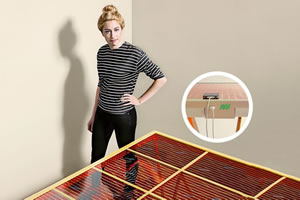Why can't every object in your home be a solar power generator?
 Sian Bradley for Wired: Marjan Van Aubel wants to transform every surface of your home into a beautiful power source. The Dutch designer thinks tables or windows shouldn't be inert, so she built ones that charge your phone as well. Her Current Table and Current Window are made from solar cells that use colour to generate electricity. "Tables are this big empty space, a surface that's not being used a lot. I saw their potential to be an independent power source, wherever you want to have it," she says.
Sian Bradley for Wired: Marjan Van Aubel wants to transform every surface of your home into a beautiful power source. The Dutch designer thinks tables or windows shouldn't be inert, so she built ones that charge your phone as well. Her Current Table and Current Window are made from solar cells that use colour to generate electricity. "Tables are this big empty space, a surface that's not being used a lot. I saw their potential to be an independent power source, wherever you want to have it," she says.
Van Aubel, who as amongst the speakers at WIRED Energy, developed her dye-sensitised solar cells while researching her product design dissertation at the Royal College of Art in London. They use the properties of colour to create a current, like photosynthesis. Different colours provide different levels of power; orange is the most efficient and blue is among the least.
Van Aubel's Current Window is made of brightly coloured stained glass and are scalable, because more surface area equals more energy. The Current Table 2.0 was developed in collaboration with engineer Peter Krige. Nanoparticles of titanium oxide are in this glass, which is dyed orange. The colour helps the particles absorb all ambient light. They then release electrons, creating a current that's stored in a battery. This way, the table also works under diffuse light – and it doesn't need to be outdoors to generate power. You can connect an app to the table, to track how much energy it's storing and learn when and where it works best. Full Article:
Comments (0)
This post does not have any comments. Be the first to leave a comment below.
Featured Product

